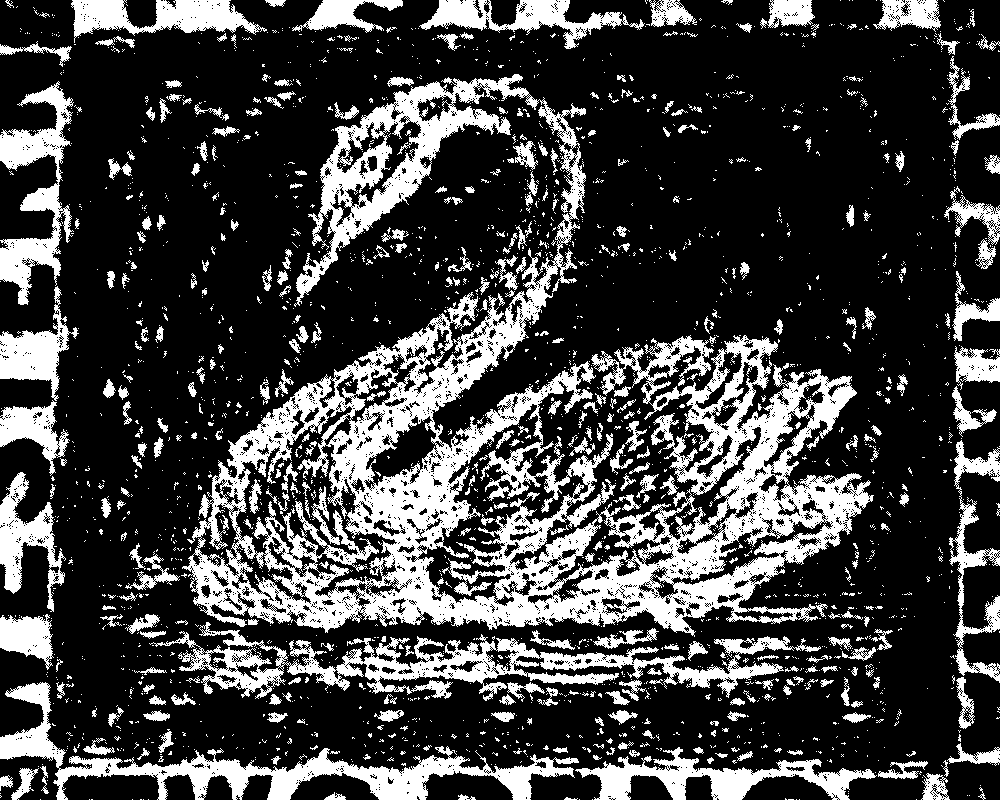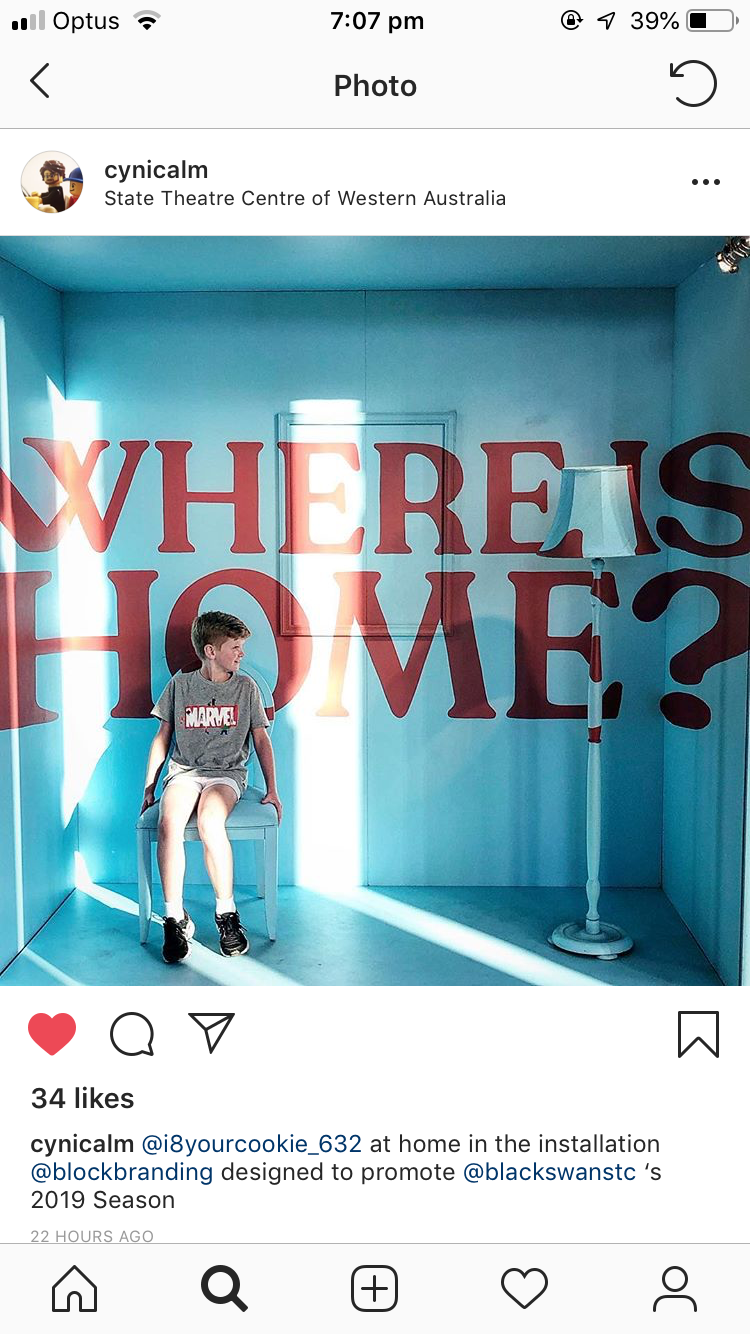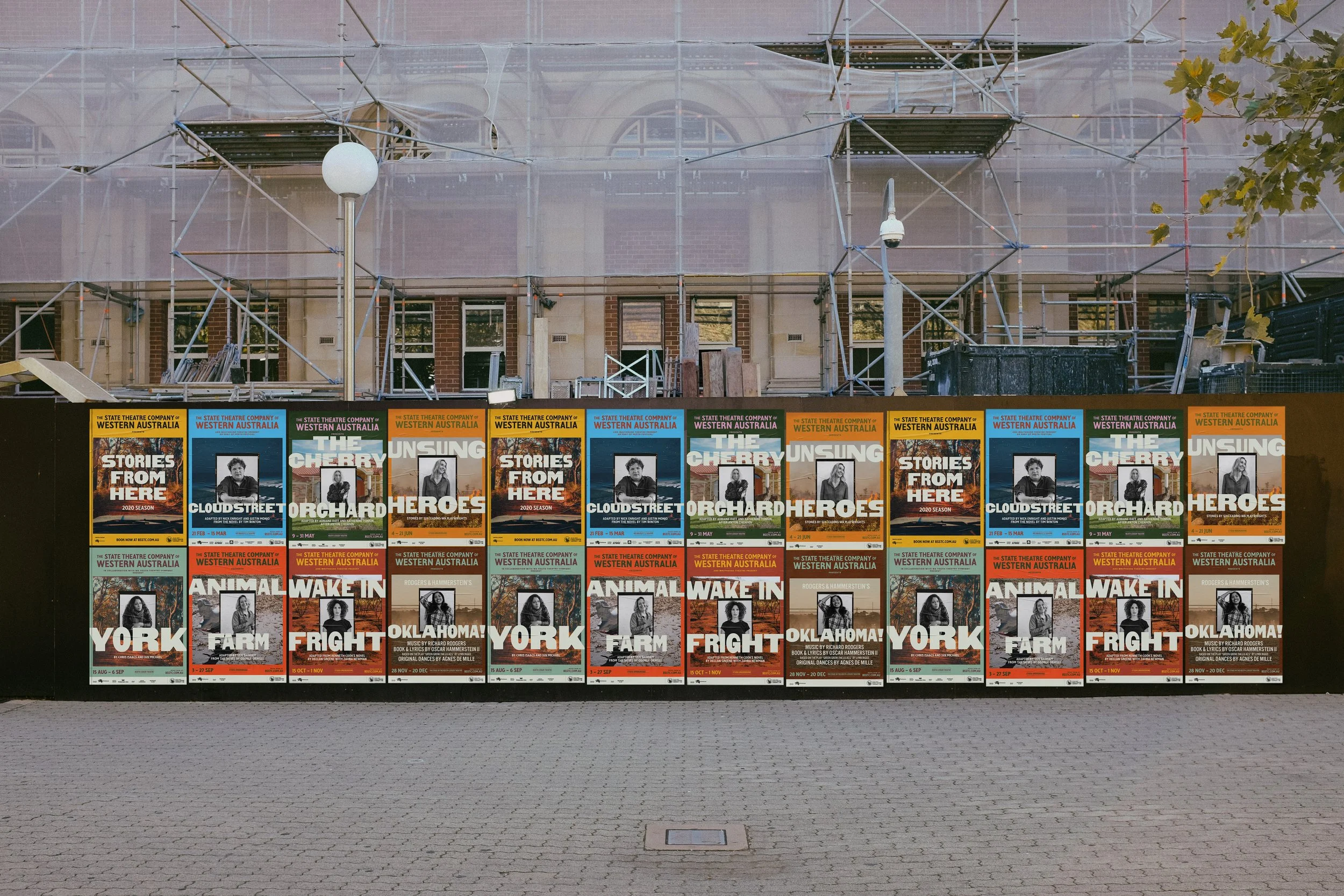A Moment in Time: Black Swan (2019 & 2020)
By Terri-ann White
In 2019 and 2020, amidst a worldwide pandemic, the Black Swan State Theatre Company showcased a suite of productions that addressed universal themes through a distinctly Western Australian lens.
Block distilled the essence of these theatre seasons, delivering two visually compelling and unified campaigns that spoke of the spatial distance and quiet landscapes of this special place we call home. Book publisher, writer and friend of Block, Terri-ann White, reflects back on this unique moment in time.
IN THESE DEMANDING times when film, television, cartoons, and other visual modes have become more exaggerated, animated, and escapist-focused, I often ponder on how theatre companies are faring—making annual programs for audiences and the furtherment of performer-production reputations and financial viability in the arts sector.
Live theatre cannot replicate the super-hero with rippling abs and, perhaps, the anomaly of a mismatched combination of body and head from two different species. Sure, multimedia can fill in some imaginative scenery, but that’s not really the same …
ABOVE: Imagery from local
photographers invited audiences
to view 2020’s Stories from Here
through a distinctly local lens,
transforming the campaign into
a survey of contemporary Western
Australian image-making.
I don’t know. I’m less of a subscriber and more of a picker and chooser these days. I was asked by Block to revisit the 2019 and 2020 season programs for Black Swan State Theatre Company, and this exercise was a revelation for me. Edging towards a moment that reshaped the whole world, one we couldn’t hide from, one that still ricochets through our lives and how we operate within it. (Covid-19, as if you could forget! Are we still recovering? I think so.)
I’m reading the 2019 season program, Where the Heart Is, as a reinstatement of the company’s roots, the throbbing local-ness of Black Swan, and then the 2020 season, Stories from Here, as an utter reinforcement of that vision. Mourning the reality that this season was dreamt and built with passion before anyone had any idea what 2020 would throw up and distort, implicating the lives of actors, musicians, creative workers, audiences.
The exhaustion many of us experienced when planning daily life back then returned to me as the heavy burden it was. But matched this time by a dual set of correctives: the approach taken by the company in making this program by placing the local as the organising focus, and the response by Block to select emerging photographers as the centrepiece in reflecting the elements with a uniqueness in a season of works–old and new– that also explicitly named places (Perth, Manjimup, York).
ABOVE: 2019’s Where the Heart Is
featured Johanna Lamb’s stark,
colourful depictions of Perth
suburbia, transforming seemingly
innocuous questions into
quietly profound statements.
How to capture a theme or a focus for a season? How does a performing arts company and its artistic leadership tie together all the elements into a coherent program (year after year) and then present it to both rusted-on and new audiences and hopefully break even financially. Year after year, you can’t stick with your favourites or your audience-base faves. There needs to be a range in the content and approach: classics, new work, comedy, tragedy, hybrid works, one-handers and ensemble works. But does a smorgasbord work? The interminable mantra of growth infects the arts, especially now when Boards are filled with growth-hunting corporate types. And yet there is nothing particularly corporate about an arts company season, is there, outside of the after-party? Finding a formula and flogging it with annual growth targets can weaken the overall effect in the arts when growth becomes the target rather than it coming from the brilliance, innovation, and sense of singular consciousness and imagination of the makers.
“From city and its suburbs to bush and beyond, and into as remote as we can find, these photographers have captured the moment in the monumental, the contradictions within our wide open roads.”
I hadn’t thought much about these matters until I began to look closely at Block’s strategy for Black Swan State Theatre Company in their 2019 and 2020 season programs, how they projected these years to audiences. I’d been a punter and supporter of the company from the start, long before it was endowed with State Theatre status in 2008. Remembering that burst of joy and pride sitting in the audience of Bran Nue Dae in 1991, the musical that started this company by its example with a coherent local story, made and embellished and brought to life by locals.
Even in the twenty-first century Western Australia wears a little badge with two messages enclosed, each able to be activated depending upon the mood:
Why are we ignored by the rest of Australia?
We are unique and our differences matter,
and we don’t need their recognition or praise.
We are so far away from those other Australians we don’t really need them practically, but something always needles us. The concept of highlighting works that were made here presented alongside works that, with a minor slant, can become from here, is one strategy for overcoming cultural cringe. The Cherry Orchard comes to Manjimup; Oklahoma! reprised in another Wild West. York for its haunted country. It makes sense for an arts company that has found its maturity, and I trust such thinking and judgement. A masterstroke, really, to have that interpretive and highly original approach.
The drive, the propulsion. Framing a season with a tableau of works from other image-making sets up the performances so appropriately they generate a match. There’s an echo, too, in the delicious settings from the 2019 season that Block also delivered (and was awarded for) with the astonishing body of work by artist Joanna Lamb: framing the season with paintings of suburban modernist rooftops and streets containing a multitude of the homes we occupy or drive past.
ABOVE: Lobby activations
at the State Theatre Centre
of WA transformed the Season’s
questions into intimate moments
of interactive reflection.
Back to the question of how to capture a theme or a focus to draw in an audience across a public programme. From this perspective, a half-decade later, the underlying and vivid result comes from the multi-arts, multi-disciplinary complexion of the program. It isn’t the standard graphic design for print and visual media to present information and attractive images. It is more aligned with the serious intent by matching image and content and mood, the ideas sitting behind both to extend the message in the theme.
Nowhere is this more pronounced than in the work of the seven emerging photographers. Given a different region to work within from across the state, from city and its suburbs to bush and beyond, and into as remote as we can find, these photographers have captured the moment in the monumental, the contradictions within our wide open roads.
And if that isn’t enough in the going-down-deep work of developing a campaign, there is the way the six new one-hander performance works about six distinctive Western Australians, bundled as Unsung Heroes, beckons to us from the centre of the season. Looking back on the more cinematic treatment of this content (from my setting in a symbolic deckchair) as the campaign was rolled out with writing, music, performance, photography including portraiture, and design quirks including a new font. It is presence that holds it suspended in time and space. You can’t ever, or shouldn’t, tell the whole story. Stories from Here. Old stories from new perspectives, and the inclusion at its centre of marginalised voices.
ABOVE: Idiosyncratic landscape
photography was juxtaposed
with striking, intimate black-and-
white portraits by photographer
Sam Harris.
There is a single jarring note when returning to the package from Block for Black Swan in 2020. In her Artistic Director’s Statement, Clare Watson writes:
“The theatre that you see here at Black Swan speaks to a future that is more tolerant, more inclusive and more compassionate.”
It looks as though we have failed much of our future potential. For now, anyway. Let’s keep trying harder, all of us, in the face of televised abject suffering on so many fronts. As Clare Watson writes in her conception of Stories from Here, this season looks at “power, progress and place”. To this, Block adds another layer, that of understanding: between people, within communities, even on a global scale.
We can live in hope.
Footnotes on Block
Terri-ann White is a book publisher, having established the independent and not-for-profit Upswell Publishing in Perth in 2021. Prior to this, Terri-ann was the Director of UWA Publishing, taught literature and writing in universities, and founded and directed a cross-disciplinary research centre at The University of Western Australia. Terri-ann is also a writer of fiction and non-fiction. She has featured in The Saturday Paper, The Sydney Morning Herald and Books+Publishing, as well as regularly contributes to writers festivals and book fairs both nationally and internationally.
With her keen interest in discovering distinct, imaginative voices, paired with her enthusiasm for writing, performance, dance, culture and the visual arts, Block asked Terri-ann to revisit their 2019 and 2020 Black Swan Theatre Company campaigns which had placed an important emphasis on global stories and local places at a significant point in time.


















